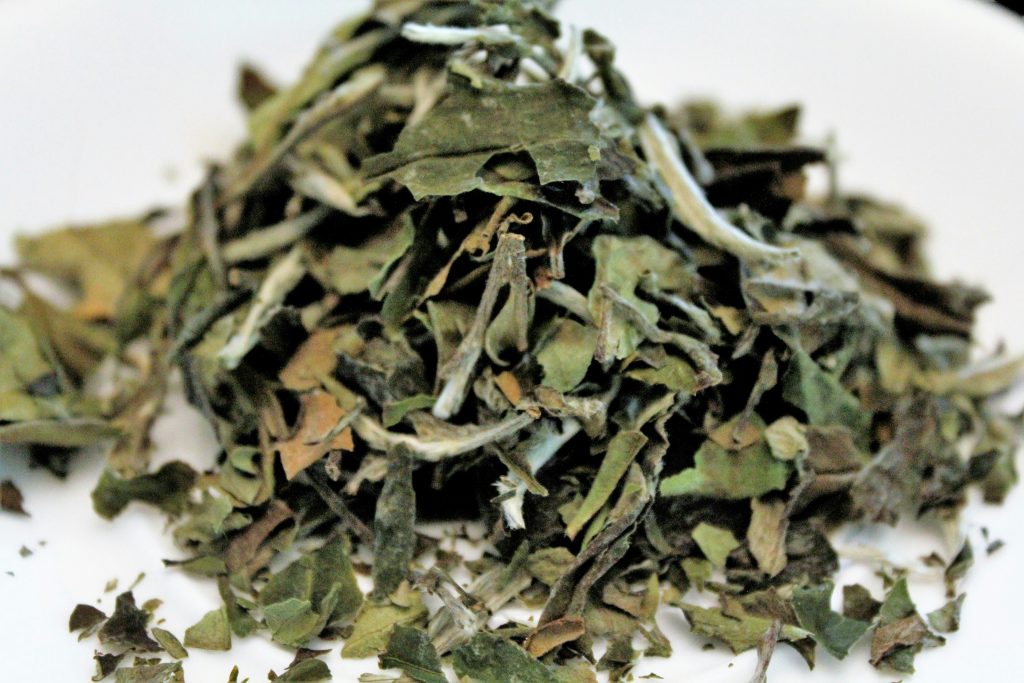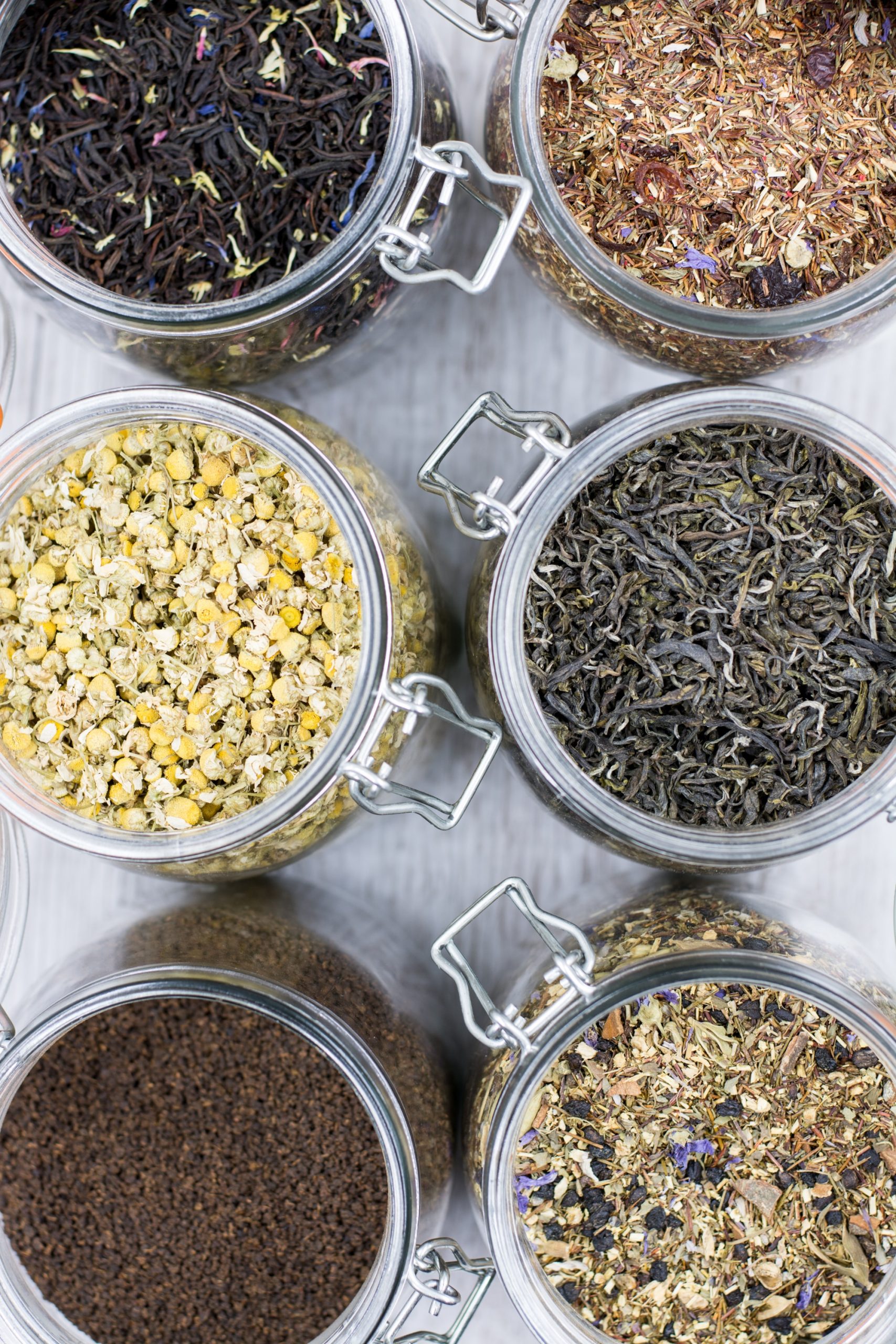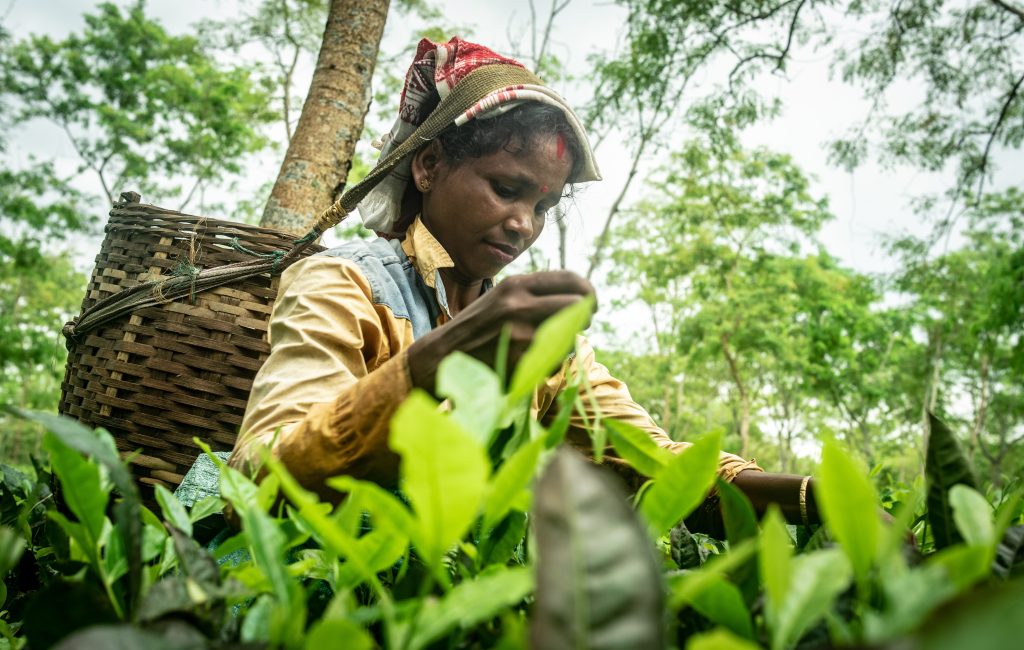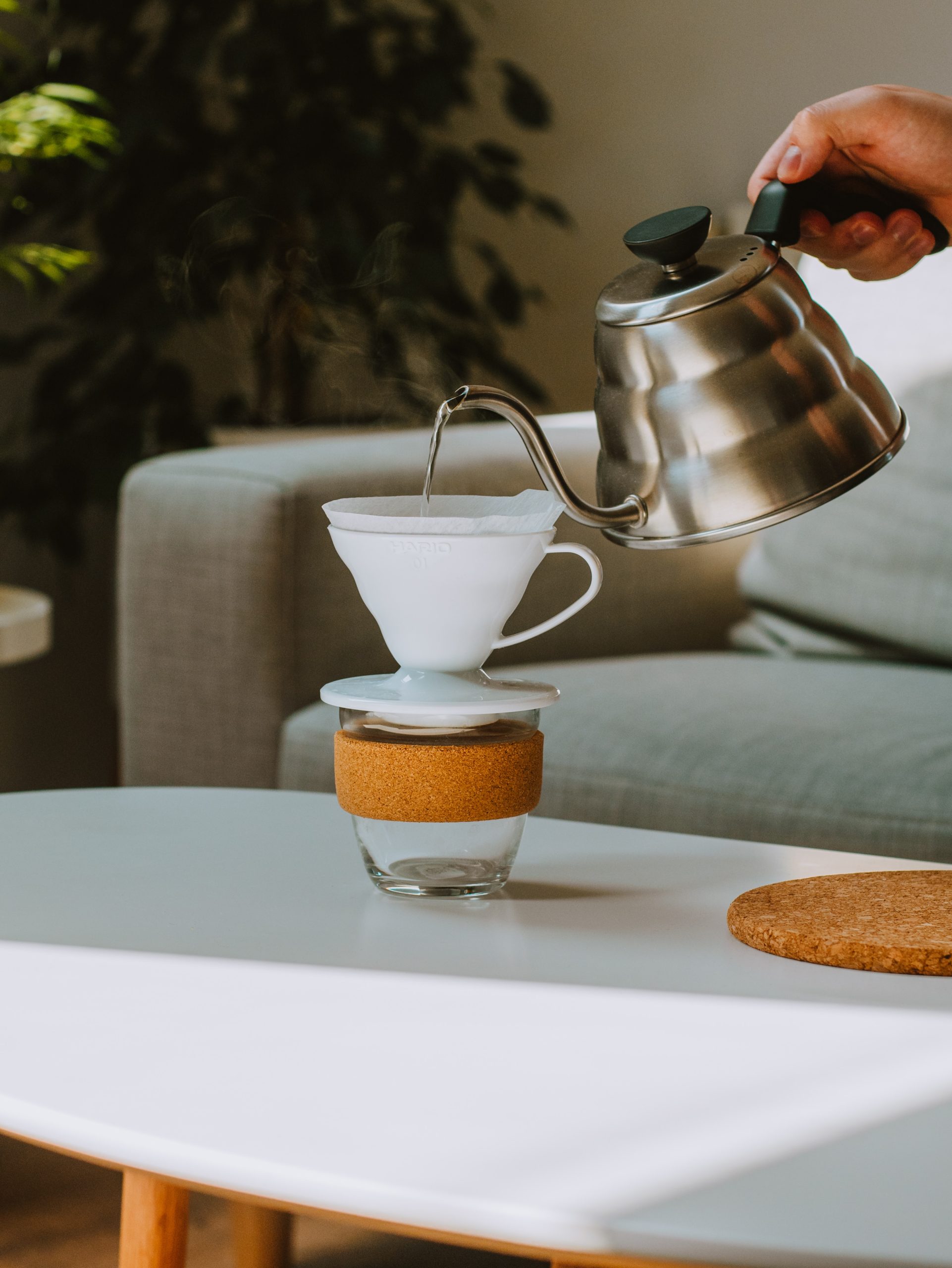WHAT IS WHITE TEA?
White tea is one of the so-called “true teas”, with some of the most delicate tea varieties you can find. This is mainly due to white tea being one of the least processed teas. White tea is made using only the youngest buds and leaves of the tea plant. White tea leaves and buds are hand-picked just as the tea plant’s leaves are opening, with the buds still have a covering of fine white hairs: this is where the name white tea comes from.
The young unfurling leaves and the furry buds are picked by hand then meticulously dried in the sun as soon after picking as possible. This allows as little oxidisation of the leaves as possible.

The Origins Of White Tea
The tea custom developed during the early Chinese imperial dynasties (between 600 and 1300) when tea drinking and tea culture flourished. The tradition was for the people to pay annual homage to the Emperor through offering fine and rare teas. A bit like an early tea tax. This imperial tea offering was customarily produced from the most delicate tea plants’ youngest, newest, and most delicate buds.
In parts of China, there were even Imperial tea gardens, often built in secret, to cultivate these rare, honouring teas. Poets referred to these special teas as “white like the clouds, green like a dream, pure like snow, and as aromatic as an orchid.”
These imperial tributes aren’t the same as what we know today as White Tea. During the Song Dynasty (960 – 1297), young tea buds would be plucked in the spring, steamed and stripped of their outer leaf, meticulously rinsed with spring water, carefully air-dried and then ground into a silvery-white powder. This white powder would be blended in hot water to produce the most delicate tea available, made for the only person in China that could afford it—the Emperor.
Types of white tea

As we know it today, white tea was first produced for commercial purposes in the 17th century when traders from western countries arrived in Chinas Fujian province. A loose-leaf version of white tea was developed from the Da Bai and Da Hao plant cultivars that produced large tea buds.
However, white teas were rarely available outside the tea-growing regions of China until recently. This was due to the delicateness of white tea made it a challenge to transport and store without it spoiling. As the loose leaf tea production process improved, the ability to export white teas expanded beyond the Fujian province of China and into other areas of the world thirsty for rare and fine teas.
Today, several countries outside China are cultivating their own types of white tea from other tea plant cultivars. Some of the most popular varieties are:
- Silver Needle (Bai Hao Yin Zhen): A true Silver Needle comes from the Fo Zi mountains of the Fujian province in China. This is probably the most prized white tea. It’s made from large, full buds covered with white, downy hairs that give the tea the silver colour to get its name.
- White Peony (Bai Mudan): has a more robust and full-body flavour than Silver Needle. This tea is known for its floral hints that emphasise the delicate nature of white teas. White Peony tea tends to be a paler green and produces a slightly nutty aroma and aftertaste.
- Tribute Eyebrow (Gong Mei): Grown in the provinces of Fujian and Guangxi, this high quality white tea is graded as the third-highest grade of tea. Due to it being picked later than Silver Needle teas, Gong Mei gives a bolder flavour. Tribute Eyebrow is similar to oolong tea, with a fruity solid taste.
- Long Life Eyebrow (Shou Mei) – Produced predominantly in Guangxi and Fujian provinces of China, Long Life eyebrow is made using the remaining leaves from the Silver Needle and White Peony harvests. The result of the late harvesting is a more robust tea that is significantly darker in colour, typically a golden yellow.
- Monkey Picked White Tea – White Monkey Picked tea gained its name from the rumored that it was harvested by trained monkeys, this exquisite tea is comprised of the finest white tea buds collected from the highest mountain and tree tops in China.
- Darjeeling White Tea: This variety is from the Darjeeling region of northern India, famous for producing black tea and where it takes its name from. The processing method is similar to the Fujian white teas, but the flavour profile tends to be much different. Darjeeling white tea is generally a light golden colour and offers a sweet mellow flavour.
The Taste Of White Teas

Like the Chinese Emperors and courtesans of ancient times, white teas are still revered today for their delicate, rare and beautiful aromas and flavours. Most white teas are still hand-picked and hand-processed, making it a true delicacy to sip this delicious beverage and appreciate the artisanship that has gone into its making.
The flavour profile is of subtle fruity flavours such as melon, peach, apricot, citrus with mildly sweet flavours and notes of vanilla and honey.
Buying and Storing Your White Tea

While your white tea will unlikely go off or wrong, it can, however, dry out and go stale. To get the freshest, tastiest tea you can, first of all, it is best to buy it from a reputable company. One that knows how, where and when their tea was produced and packaged.
White tea, along with green tea, is delicate therefore requires similar storage methods. Lower oxidised teas can remain fresh for anywhere up to a year if cared for correctly.
Tea Storage Tips
Some tips for storing white tea to keep it fresh are:
- Store your white tea in a cool, dark place.
- White tea lasts longer if it’s stored in a solid, airtight container.
- Never store white tea in the fridge and keep it away from heat, light, oxygen and moisture as much as possible
- Don’t let tea share the cupboard with coffee and spices; they can leach their flavours into your tea leaves.
How Much Caffeine Is In White Tea?
White tea is usually has a lower caffeine content than other teas, such as black or green teas. The white tea plant native to China has a lower caffeine content than most other tea plants. However, different varieties of tea plants worldwide cultivated for white tea may be higher in caffeine.
Studies have shown that some white teas have been found to contain as much if not more caffeine as black or green tea. This depends on how they were processed and where they were cultivated.
The studies essentially say that the amount of caffeine in any tea brewed varies depending on various factors, including where the plant was grown, how it has been processed, and how it was finally brewed by you. If you monitor your caffeine intake, you should always ask your tea supplier for specific caffeine information for the tea you’re buying.
How is white tea made?

White tea is thought to have originated around the 16th century in the Fujian province of China. The cultivar that is suspected to be the Camellia sinensis var. Khengo Bai Hao and Camellia sinensis var. Fuding Bai Hao plants. Many tea aficionados would say that true white tea has to originate from this province and these cultivars. However, many of the other tea growing regions of the world have started producing white teas using local tea cultivars that are mildly different from those grown in China.
The method of production of white tea, however, remains, for the most part, the same across most of these regions.
The plants plucked for making white tea are typically grown at a very high elevation (usually 5000-6500 ft above median sea level). The rigours of such terrain and the cold air intensify the plant’s aromatic flavours in concentrated form within the newly forming buds and leaves. To extract flavours from such buds/young leaves, very little processing is required, and usually, no more than two steps minimal processing – withering and drying – are employed for making the final tea.
Plucking
Most high-grade teas are made from young, unopened buds and the first two leaves of the shoot on the tea plant. Plucking for white tea is carried out early in the growing season when the tea plant is at its prime growth stage. Shoots are typically plucked under temperate conditions and only in the first few days of the bloom. Conditions at the time of plucking can play a significant role in the quality of the white tea.
Withering
Withering is the process of allowing the leaves to wilt for a specified period. The freshly plucked white tea buds are placed on large withering pans, similar to woks, then left to wilt for up to up to 3 days (72 hours).
The process is now normally carried out under tightly controlled conditions in a factory setting. However, some specialist white tea producers choose to carry on with the traditional method to wilt the teas under the sun.
Occasionally, the wilted tea leaves are loosely packed and rolled by hand to extract maximum flavours from the leaves. However, rolling is generally avoided when producing white tea from the buds.
Drying
Withering for long periods draws out most of the moisture in the tea leaves. However, to ensure the white tea has a full flavor and long shelf life, the buds/leaves can be fired in an oven at around 110°C, to dry out further. The aim of drying is to bring down the moisture content in the tea leaves to under 1%.
Keeping the processing of white tea to a minimum and low oxidation ensures some of the freshest and most delicate tea available.
What’s oxidation got to do with it?
All five true teas — white, green, oolong teas, pu-erh and black tea – come from the same Camellia sinensis plant and indigenous bush to China and India. Hundreds of hybrids and cultivars have been developed from the Camellia sinensis plant over the centuries, each created for the diverse geographical areas of the world they are found in. But it’s ultimately the variety of tea plants and how the plant’s leaves are processed defines the end product of the tea that ends up in your cuppa.
Probably the main contrast in how various teas are processed is the volume of oxidation that takes place — Oxidisation is essentially how long the tea leaves have been exposed to oxygen after harvesting. Those that have been exposed longer to oxygen have darker leaves, and the tea takes a deeper and more developed flavour profile. Tea masters use a range of methods to vary the levels of oxidation during processing, including rolling, crushing or shaping the leaves to accelerate the oxidation, then steaming, firing or roasting the leaves to halt oxidisation.
White tea is so minimally processed, compared to Black Tea or, for example, that less oxidation takes place. As soon as the buds are hand-picked, they are set in special trays to wither and air dry in the natural sun itself. This is generally done in a managed and controlled environment. Some of the young buds may be exposed to low heat or steam to help dry them more quickly to halt oxidation. Due to the reduced oxidation, white tea has a much softer, delicate flavour profile than its green tea or black tea.
How To Brew White Tea

For each individual white cup of tea blend, we suggest that you ask your tea vendor for their recommended brewing instructions specific to that tea, as different white teas can have different ideal brewing temperatures and steeping time.
As White tea uses only the young buds and leaves, it is a delicate tea. Therefore, we recommend brewing between 80-85°C or 176-185°F. It’s best to brew this type of tea using a temperature-controlled tea kettle or thermometer to ensure the correct water temperature for brewing. Use 1 to 2 teaspoons for every 225ml of water, then brew for 3 to 5 minutes. The longer the tea brews, the stronger the tea will taste.
